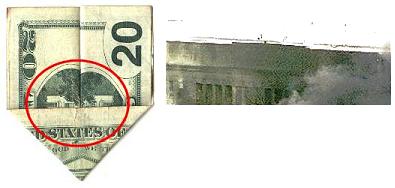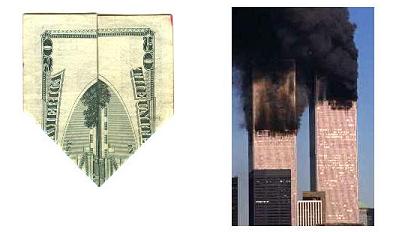
Posted on 05/13/2003 8:00:46 AM PDT by Monty22
Edited on 04/29/2004 2:02:32 AM PDT by Jim Robinson. [history]
(Excerpt) Read more at money.cnn.com ...

WASHINGTON (CNN/Money) - The $20 bill got a facelift Tuesday, complete with a new number arrangement and a new background.
The new multicolored bill was introduced at the Treasury Department in Washington.
The department's Bureau of Engraving and Printing showed the bill, which still bears a portrait of Andrew Jackson on the front -- without the old circle -- and has a cluster of small 20s on the lower right-hand corner on the back. The front depicts a faded bald eagle as a background with subtle pink and light blue hues.
The redesigned bill is intended to thwart counterfeiters. The Treasury Department intends to redesign bills every seven to 10 years to keep up with technological advances in counterfeiting.
"The soundness of a nation's currency is essential to the soundness of its economy. And to uphold our currency's soundness, it must be recognized and honored as legal tender and counterfeiting must be effectively thwarted,'' Federal Reserve Chairman Alan Greenspan said in a ceremony at the Bureau of Engraving and Printing.
The last redesign of American currency was in 1996, when a new $100 bill was introduced with anti-counterfeiting features such as ink that appeared black from one angle and green from another; a watermark visible only when holding the bill up to the light; and a security strip running vertically through the bill -- features that will remain in the newest currency.
Other currencies with similar features followed -- a new $50 bill in 1997, a new $20 bill in 1998 and new $5 and $10 notes in 2000.
The bill will go into circulation in the fall, and others will be redesigned in the next few years. One- and two-dollar bills will not be redesigned.
In the meantime, the Treasury Department is working with companies in the vending, gaming and public transportation industries to help them adjust their currency-reading devices to accept the new bills.
Treasury has given these companies material they can use to update bill-acceptance devices, but nothing they can spend or use to make counterfeit bills.
But some currency experts warned that the new features likely will do little to discourage counterfeiters.
"Everything they've done before has been superseded by better counterfeiters," said Dennis Forgue, an anti-counterfeiting expert at Harlan J. Berk Ltd., a numismatic firm in Chicago. "With the effectiveness of computer-generated images these days, they can make some pretty nice counterfeits pretty quickly."
Of all the counterfeit bills in circulation, about 40 percent are produced digitally, according to the Secret Service, which was established in 1865 to fight counterfeiting.
Forgue said some counterfeiters are able to bleach the ink out of newer bills of smaller denominations, leaving just the unique currency paper and the watermark, and then print the features of a higher-denominated bill on the blank paper.
"The ones I've seen have been not that great in quality, but can pass in a lot of places," said Forgue, who doubted the features of the new bill would do anything to discourage people from this process, called "leaching." ![]()



It sucks. I want my greenbacks back.
Everytime a lib uses a cash machine...


Disclaimer: Opinions posted on Free Republic are those of the individual posters and do not necessarily represent the opinion of Free Republic or its management. All materials posted herein are protected by copyright law and the exemption for fair use of copyrighted works.